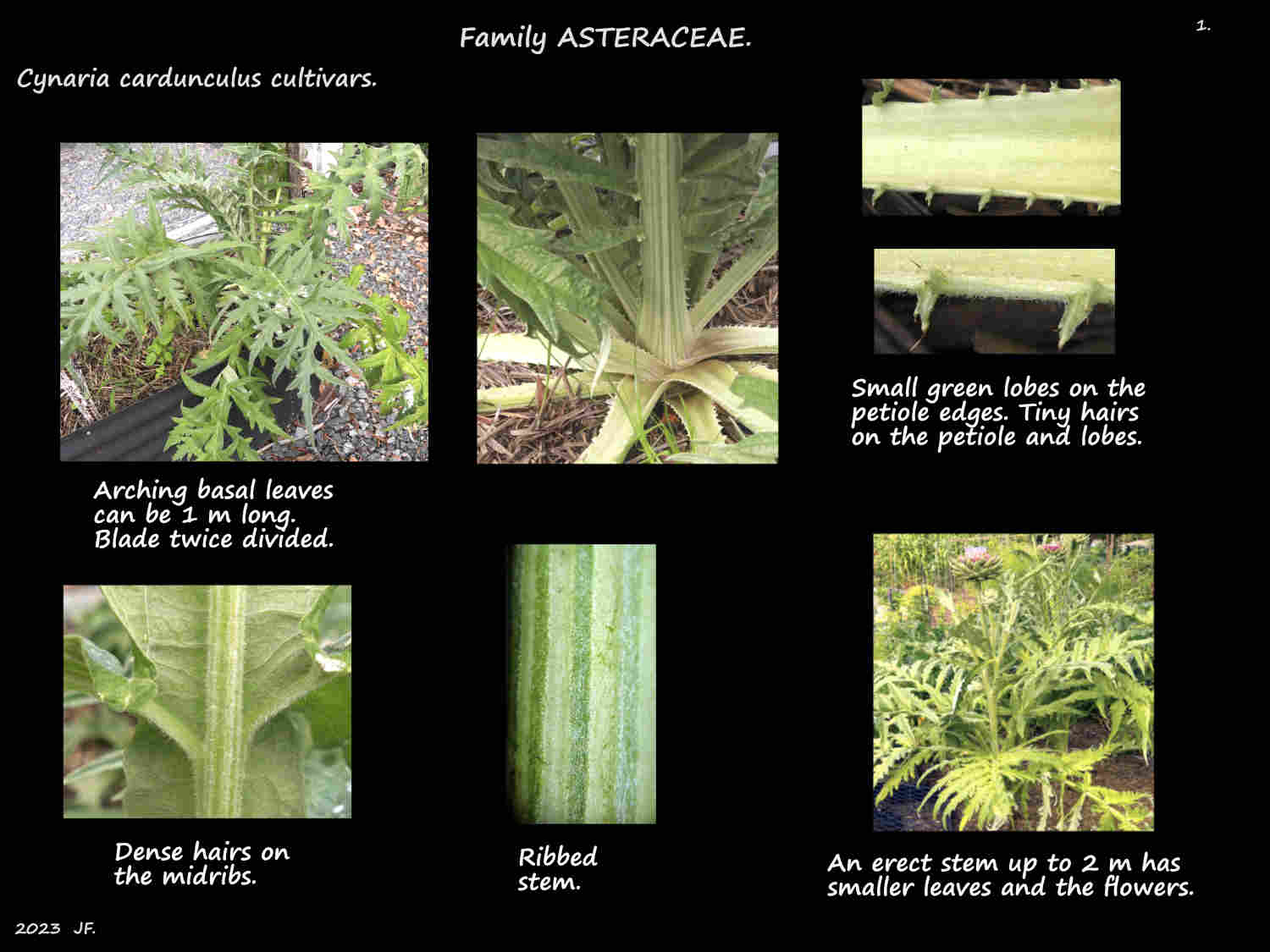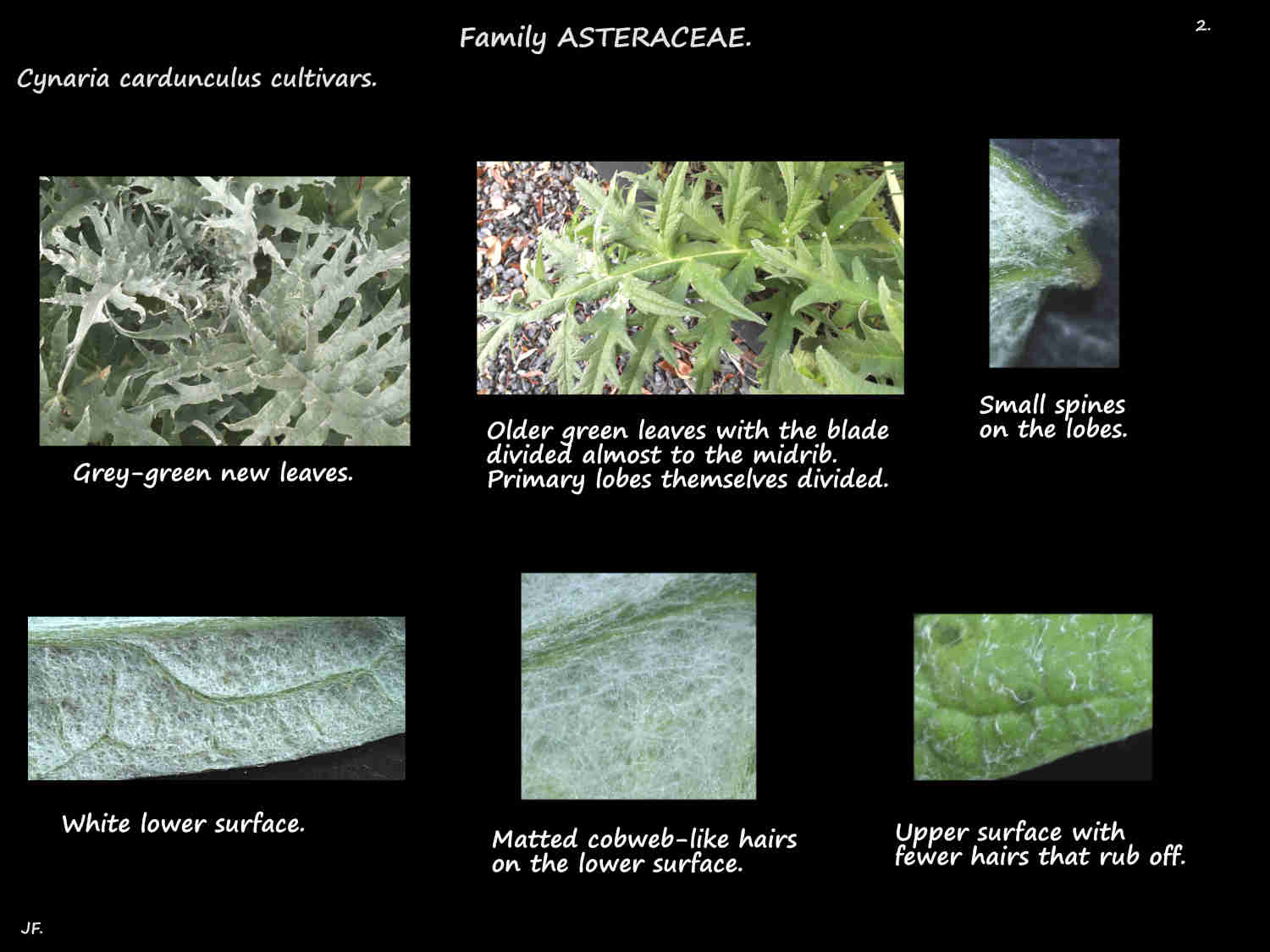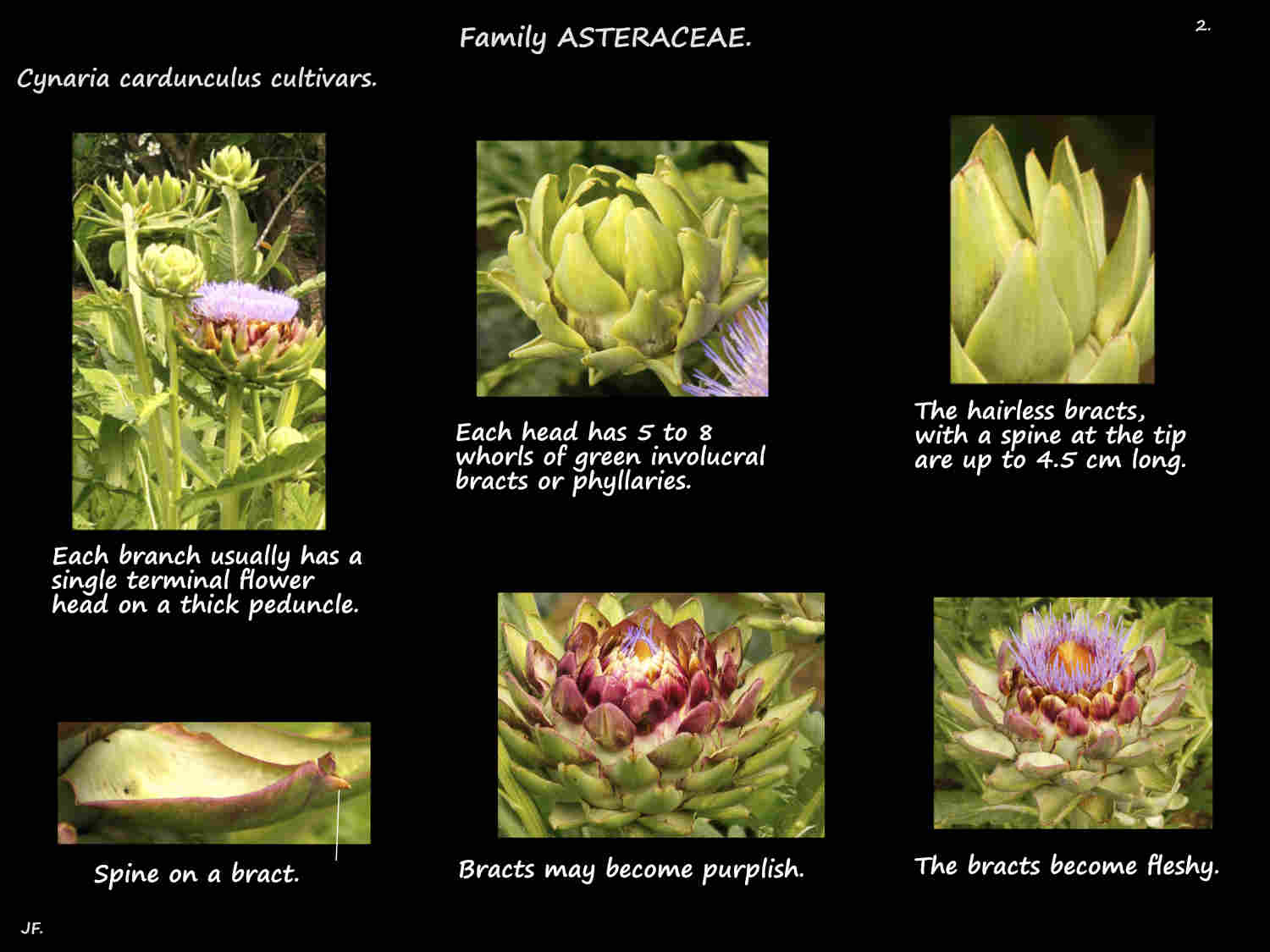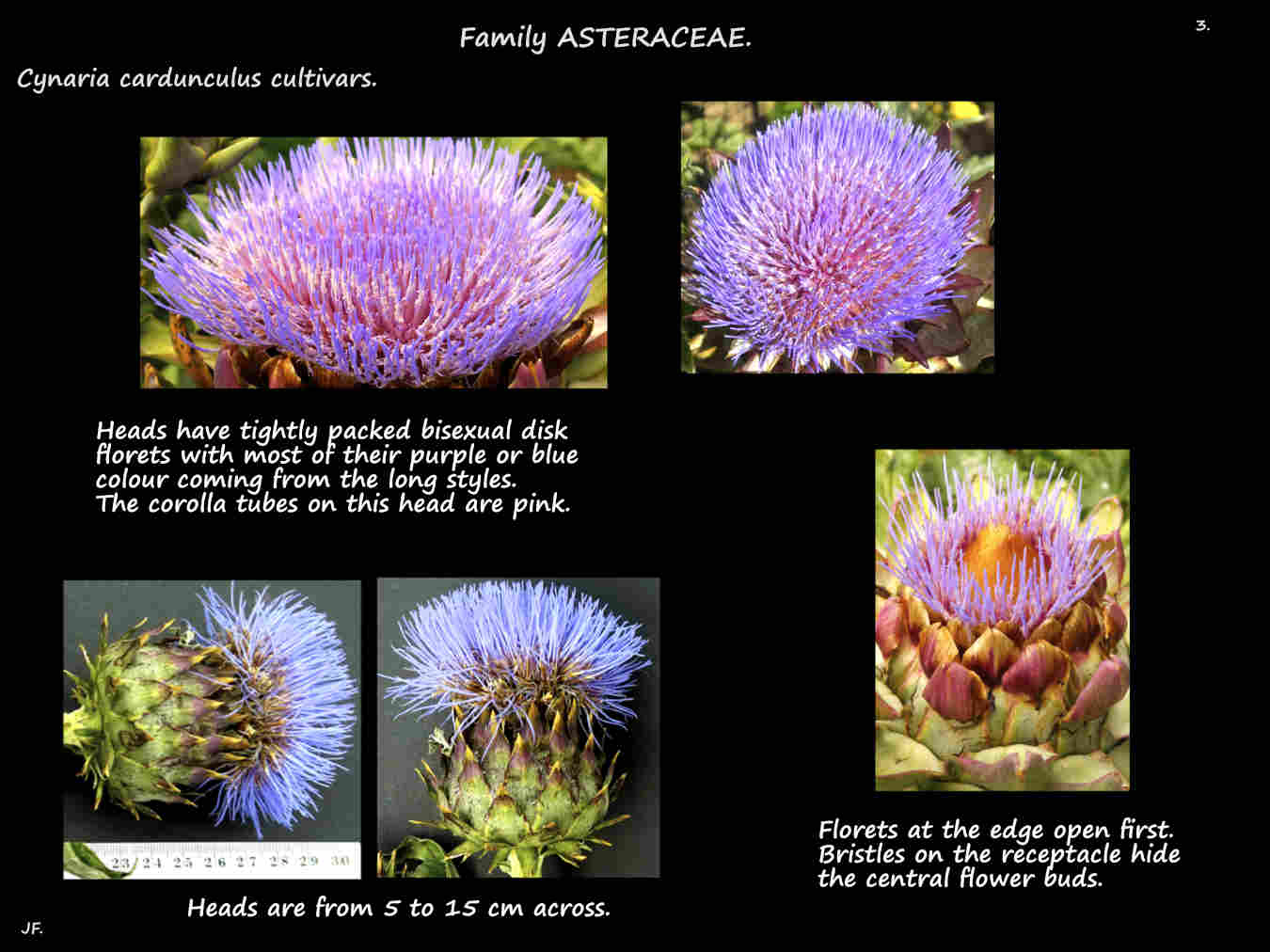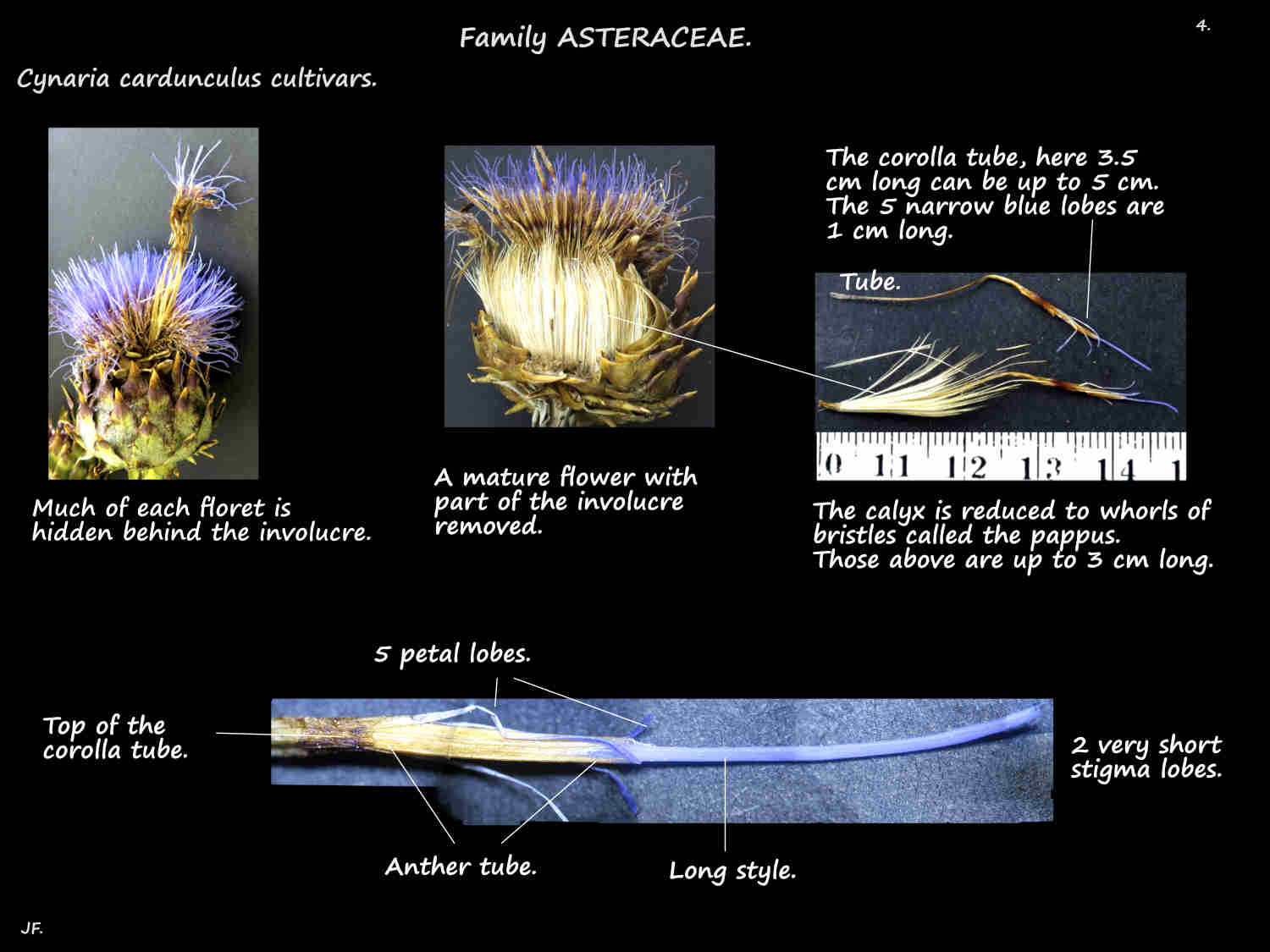Cynara cardunculus.
Known as the Artichoke thistle, Wild artichoke or the Cardoon it is an invasive weed in many countries but is
sometimes grown as an ornamental plant.
Naturalised in Australia they can be invasive here.
The erect perennial herbs, up to 2 m high are often grown as an annual.
The plant dies back each year but regrows from the very long taproot.
Typically there is only one grey-green ribbed stem from the base but there may be more.
Stems, with a few hairs and small prickles branch a lot towards the top.
The stem grows from a basal rosette of grey-green leaves.
These leaves, up to 1 m long and 35 cm wide spread horizontally.
The alternate leaves along the stem are 15 to 30 cm long.
All the leaves are deeply once or twice divided into many lanceolate to oblong lobes.
The edges can be smooth or have large teeth and the teeth and lobe tips have a spine.
There are a few hairs on the upper surface and dense white ones underneath.
The terminal globular flower heads, on a thick stalk or peduncle are up to 15 cm across.
Each branch may have 1 head or a cluster with a few.
There are 5 or more whorls of green or purplish involucral bracts at the base of the head.
The smooth ovate bracts or phyllaries, up to 4.5 cm long have a pointed tip with a short or prominent spine.
The tightly packed flowers or florets are on a flat fleshy receptacle with no scales (paleae).
These are basically discoid heads with almost all the florets being fertile and bisexual.
(The few florets in the outer whorl have only a tiny ligule on the corolla tube so look similar to the disk florets.)
All florets have a calyx reduced to linear bristles collectively called the pappus.
The florets have a very slender corolla tube up to 5 cm long with 5 narrow 1 cm long lobes.
The petals are typically blue or purple (white).
The 5 stamens have free filaments with 1 cm long basifixed anthers that are fused into a tube.
Each anther sac has a downward pointing lower lobe and the slightly wider oblong tips are free.
The 2 styles from the inferior ovary, fused except at the stigma-bearing tip extend well past the corolla.
Around 7 mm long the dark angled cylindrical seeds are smooth.
The pappus attached to the base has whorls of stiff feathery bristles up to 4 cm long.
The up to nearly 100 bristles, all joined at the base fall off as a single unit.
The Globe or Crown artichoke, a commercial plant is seen as Cynara scolymus and Cynara cardunculus var. scolymus
but these are now generally accepted as synonyms of C. cardunculus.
They are plants whose flower buds are picked early while the receptacle and bracts are still soft and fleshy for eating and have no spines.
There are numerous cultivars including some with no spines and others with pink petals.
J.F

